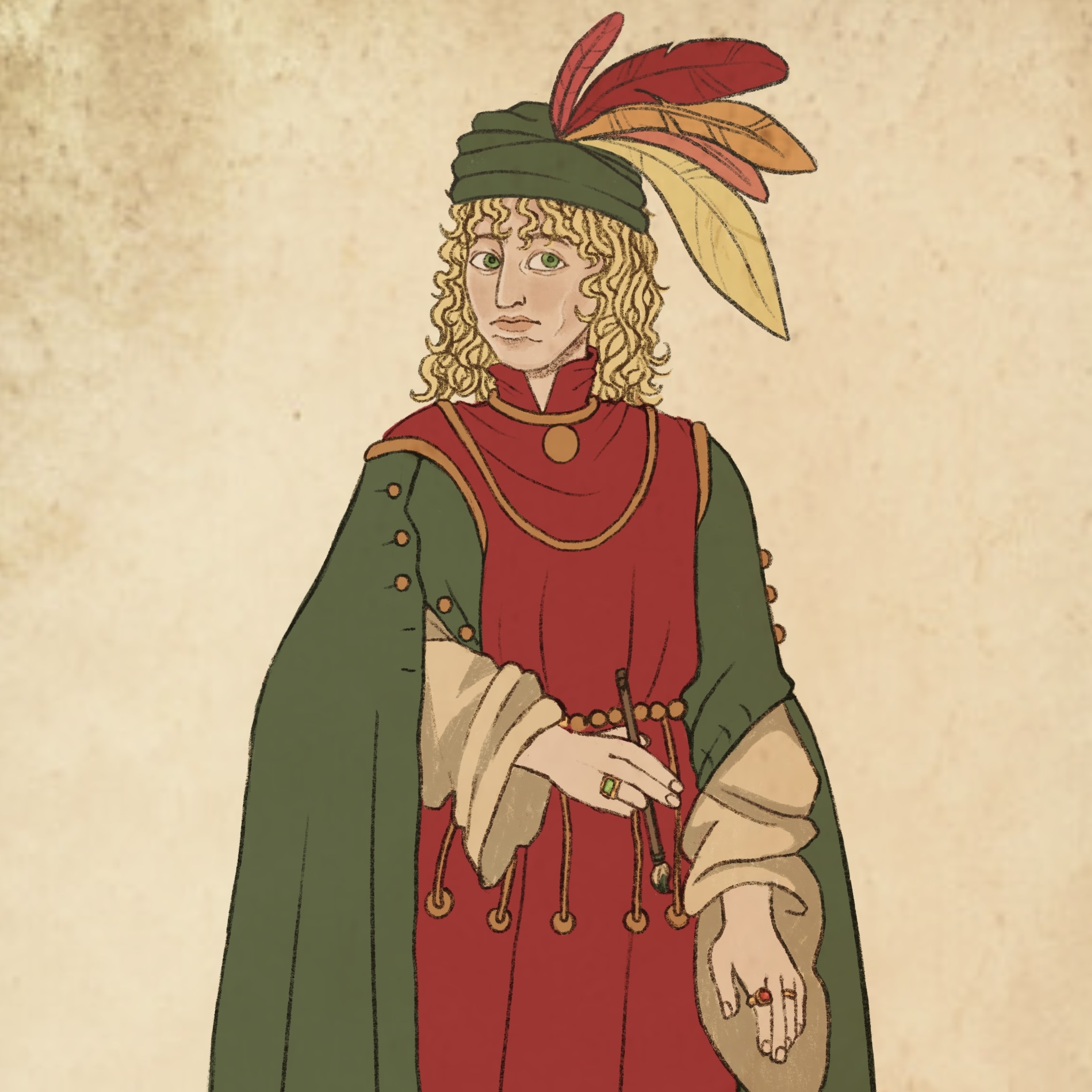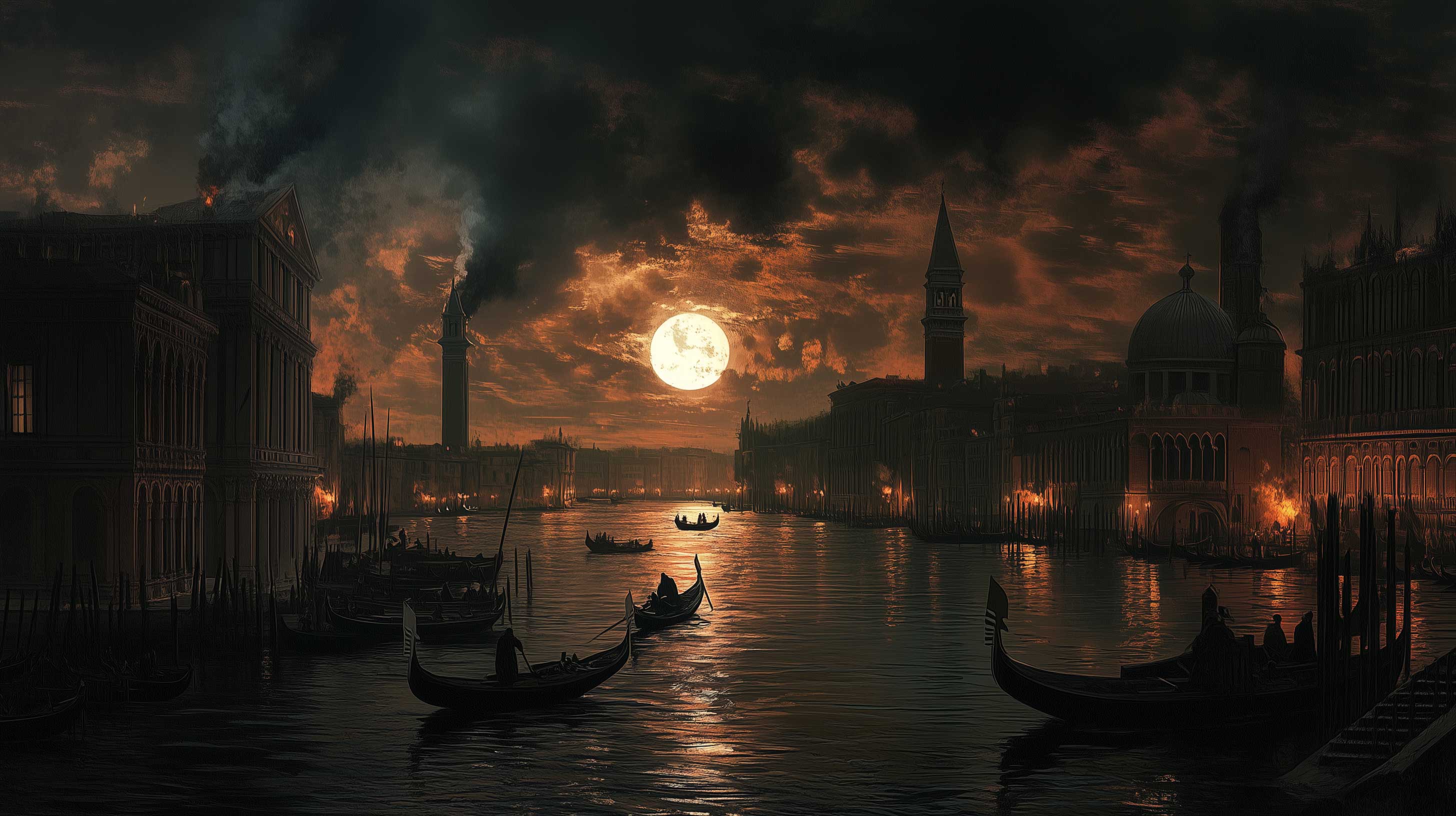Jabobello del Fiore (or Jacobo as he was primarily called by both patrons and friends) was a Venetian painter born in 1375. His early work is in the Late Gothic style while his mature work displays a local Venetian style established by the school of Paolo Veneziano, an artist and workshop proprietor with notable Byzantine inspiration in his work. This stylistic return to his roots sets him apart from other Venetian contemporaries. During his lifetime, he received commissions primarily on the Adriatic coast and in Venice.
Early Life & Family
Jacobello del Fiore spent his youth and early years under the tutelage of his father, Francesco del Fiore. While it is known that Jacobello del Fiore was married in 1394, the identity of his spouse is unknown, as is whether or not he had children. Jacobello's father, Francesco, was a painter himself: in 1376 he is documented in a contract as the chief officer of the confraternity, or organization dedicated to recognizing Christian works of charity, Scuola dei Pittori. Francesco headed a workshop that included Jacobello and his two brothers, Nicola (who died in 1404, when Jacobello was in his twenties) and Pietro.
Personal life
While the painter Jacobo del Fiore was a well-known and respected artist to the greater Venetian society, details of his life and person became sparse after 1399. According to the people who knew him, he lived an outgoing a greatly public life - often seen at grand functions and balls or organizing private parties at his town house. That seemed to suddenly change dramatically from that point onwards, he'd rarely appear before the public eye and would prefer to spend his time indoors, painting.
Final Years
During the 1430s he is believed to have mentored a young Carlo Crivelli, who was to be later known for his small colorful temperas of landscapes. Jacobello's adopted son, Ercole del Fiore, appears in a 1461 record stating his vocation as a painter. Jacobello died in 1439 in his sixties.
Credited Works and Influence
While Jacobello's earliest surviving and confirmed work is dated in 1407, he is thought to be the painter of a Crucifixion piece in the Matthiesen Collection and the Virgin and Child of Piazzo Giovaneli, both painted in the late 14th century. [...]
[Many of the details are faded to unintelligble scribbles and the bottom half of the page is burned and lost.]
[A page hidden between the pages of the artist's biography. It seems to be a hand-written letter with editor's notes on the margins that was never added to the contents.]
Pietro del Fiore's notes on his brother Jacobello
Jacobo was a great artist, a true master of his craft. He had a difficult life as the oldest son and our father was strict in his tutelage. Perhaps that is why Jacobo acted out in his personal life the way he did. He was considered quite the hedonist even amongst his circle, often enjoying his popularity and wealth by indulging in drink and women. That did not distract from his devotion to his art and comissions, however the Church's represantatives that handled them were vocal on their dissaproval to his vices. His works were simply too great for it to matter.
He changed a lot after he met a patron of his, one [Sire name]. He was a wealthy nobleman that spent time abroad and more recently returned to Venice and particularly enjoyed art. He seemed to take an immediate interest in Jacobo and comissioned multiple pieces. I only started to suspect the man might have a more personal interest in him because he was suddenly at Jacobo's side more often than not. I started to suspect their relationship was unchristian, at least on [Sire name]'s part. I warned my brother to distance himself from him, because while he was respected and had powerful friends, he was off-putting and strange.
Then Jacobo dissapeared. He later told me he needed to take his mind off his work for a while and went to [Sira name]'s summer house in Verona, but I'm not sure I believe that is all it was. He was gone for close to two years and he came back... different. He was even more erratic, he stopped going outside and drowned himself in women and vice every few nights. He became distant to the family and began working independently after that and kept associating himself with that patron of his. As time passed, we saw less and less of him and it was my brother Nicola the last to see him mere days before he was found dead. The tragedy that hit the family because of his death and Jacobo's refusal to attend the funeral made our father demand that we cut all relations with him.
I still followed his career and could only marvel at his work for the church and even the Doge's Palace. Despite his troubled life, I thank God that he never lost his love for painting.
I never saw him again. Now that he's dead, I deeply regret not trying to search for him to reconnect, especially after the death of our father. His adoptive son, Ercole del Fiore left some letters and personal items of Jacobo's to me, but I never saw him in person either, as he left Venice to work as a painter in Rome. My wife was home to receive him and tells me he's the spiting image of Jacobo, as strange as it might seem.
Read more...




Comments